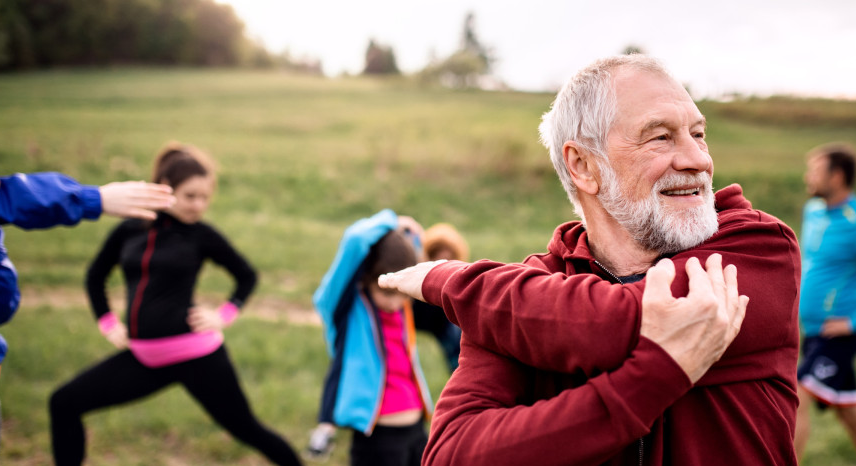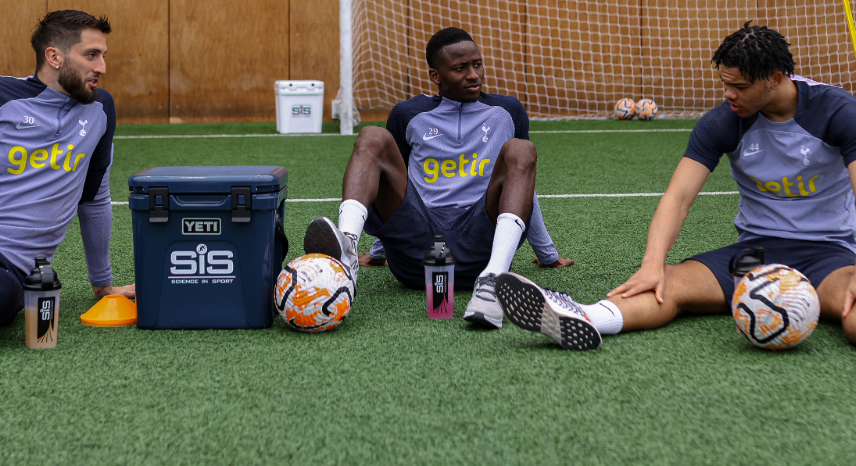Creative Fitness Games That Keep Kids Moving and Smiling
Time 6 min(s) read
You know how important it is for kids to stay active, but designing a fitness routine for children requires more than just movement.
You know how important it is for kids to stay active, but designing a fitness routine for children requires more than just movement. Kids need structured physical activity to build healthy habits, support growth, and develop lifelong wellness. However, for exercise to be effective and sustainable, it must also be fun, safe, and age-appropriate.
Blending fitness with play keeps kids engaged while helping them develop coordination, strength, and confidence. A well-rounded routine balances movement, creativity, and structure, making fitness something they look forward to. With the right approach, you can encourage a love for movement while safeguarding their developing bodies.
A safe and engaging fitness routine fosters both physical and emotional well-being. By helping kids move, laugh, and learn, you will empower them to stay active and healthy well into adulthood.
Principles of Safe Fitness for Kids
The Importance of Warm-Ups and Cool-Downs
- A proper warm-up prepares muscles, joints, and the cardiovascular system for activity.
- Dynamic stretches like arm circles, leg swings, or light jogging loosen tight muscles.
- Cool-downs, including static stretching, help reduce muscle soreness and improve flexibility.
- These routines reduce the risk of sprains, strains, and overuse injuries.
- Adding fun warm-ups like a group game of tag helps get kids excited and ready for movement.
Growth Plate Awareness
- Kids have open growth plates, making them more prone to injury if exposed to excessive load.
- Avoid heavy resistance training for younger children to protect bone development.
- Encourage bodyweight exercises, jumping, running, and climbing, which are safer and stimulate healthy growth.
- Prioritize movements that enhance coordination and stability.
- Keep an eye on joint-heavy activities like long-distance running; mix in cross-training to minimize repetitive strain.
Hydration and Recovery
- Kids often forget to hydrate while playing. Encourage regular water breaks.
- Teach them to listen to their bodies to avoid overheating or fatigue.
- Allow ample rest between sessions, especially after high-intensity activities.
- Emphasize the importance of sleep as a vital recovery tool.
- Introduce light breathing exercises or mindfulness at the end of workouts to encourage relaxation.
Age-Appropriate Fitness Activities
Ages 3-6: Building Movement Foundations
- At this stage, fitness should focus on fun and basic motor skills.
- Ideal activities include:
- Tag games to develop agility and speed.
- Hopscotch for balance and coordination.
- Obstacle courses to improve spatial awareness.
- Animal movements (bear crawls, crab walks) to engage multiple muscle groups playfully.
- Parachute games for group play and sensory stimulation.
- Keep sessions short (15-30 minutes) and unstructured.
- Encourage exploration of movement in all planes—sideways, forwards, backwards, and rotational.
Ages 7-12: Introducing Strength and Sports Fundamentals
- Begin teaching basic bodyweight exercises like:
- Push-ups for upper body strength.
- Squats and lunges for lower body power.
- Planks to build core stability.
- Skipping rope drills for coordination and stamina.
- Incorporate sports-specific drills to prepare them for team sports (e.g., passing drills, dribbling).
- Introduce balance boards, cones, and agility ladders to improve coordination.
- This is the ideal age to build agility, endurance, and coordination through fun activities like relay races and climbing.
Teens: Structuring Workouts for Long-Term Success
- As kids grow into teenagers, you can introduce light resistance training under supervision.
- Focus on:
- Agility drills (ladder runs, cone drills) for explosiveness.
- Plyometrics (jump squats, box jumps) to build power.
- Basic resistance work with bands or light weights to enhance strength.
- Team workouts to encourage camaraderie.
- Encourage sports participation, structured circuits, and group classes.
- Teach them proper lifting techniques and injury prevention strategies.
- Help teens begin to understand fitness tracking tools, heart rate zones, and progressive overload.
Creative & Fun Fitness Ideas
Mini-Circuits with Playful Elements
- Design circuits that mix fun with physical challenges:
- Jumping jacks + bear crawls + frog jumps + skipping rope.
- Include short bursts of 30-60 seconds per station.
- Add rest stations like “balance on one leg” to promote mindfulness and focus.
- Rotate activities to keep engagement high.
- Allow kids to help design circuit stations for extra buy-in.
Gamify Workouts to Spark Excitement
- Kids respond well to games. Try:
- Fitness scavenger hunts where they complete tasks at each checkpoint.
- Relay races to develop speed and teamwork.
- Simon Says with fitness movements (e.g., “Simon says, do 10 star jumps”).
- Fitness bingo cards with movement challenges (e.g., “5 squats,” “balance on one foot for 10 seconds”).
- Obstacle courses combining crawling, hopping, balancing, and sprinting.
Yoga and Stretching Sessions
- Introduce yoga poses like tree pose, downward dog, and child’s pose.
- Use storytelling (e.g., pretend to be animals during yoga) to engage younger kids.
- End sessions with breathing exercises or relaxation techniques.
- Helps improve flexibility, balance, and emotional regulation.
- Add group poses or partner stretches to encourage cooperation and fun.
Fun Challenges to Keep Kids Engaged
- Set up family or class-wide challenges:
- 30-day plank contest (track progression).
- Step-count competitions using simple pedometers.
- Balance challenges (e.g., who can hold a tree pose the longest).
- Obstacle race weekends in the park or backyard.
- Keep rewards simple, like stickers, certificates, or choosing the next activity.
- Involve kids in goal-setting by allowing them to vote on challenges or rewards.
Set Fun, Achievable Goals
- Goals should be age-appropriate and attainable (e.g., “Learn to do 10 push-ups in 4 weeks”).
- Focus on participation and progress rather than competition.
- Celebrate effort as much as achievement.
- Use visual progress trackers, like sticker charts or wall posters.
Make Fitness a Family Affair
- Kids mirror adult behavior. Include them in family fitness routines:
- Weekend hikes, bike rides, or family soccer matches.
- Parent-child yoga or simple home workout circuits.
- Dance parties or active games after school.
- Modeling healthy habits makes fitness feel like a shared experience.
- Organize community “family fit” days to connect with others.
- Avoid monotony by introducing new games, sports, or fitness challenges every few weeks.
- Rotate between outdoor activities, team sports, and solo exercises.
- Seasonal shifts (e.g., swimming in summer, ice skating in winter) can keep routines fresh.
- Add themed workout days, such as “superhero strength day” or “pirate adventure obstacle course.”
Reward Consistency and Effort
- Recognize consistency and dedication over results.
- Use small rewards like certificates, fun days out, or the chance to pick the next group activity.
- Verbal praise reinforces intrinsic motivation.
- Involve kids in setting new targets and reflecting on their progress.
Fitness for kids should never feel like a chore. Blending safety, structure, and fun helps children develop healthy habits, strong bodies, and confident minds. When kids enjoy their workouts, they are more likely to stick with them, laying the groundwork for an active, healthy future.
Consistent, fun fitness routines empower kids to stay physically active, mentally resilient, and socially engaged. As you create playful, developmentally appropriate workouts, you will help kids associate fitness with joy, growth, and long-term well-being.
Encourage parents and schools to make physical activity a priority, and you will foster resilient, energetic kids ready to thrive in every aspect of life.
Learn how to create safe, effective, and enjoyable fitness routines for children to support their health and development.



